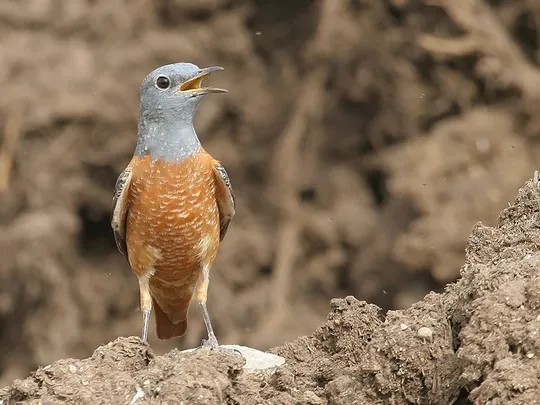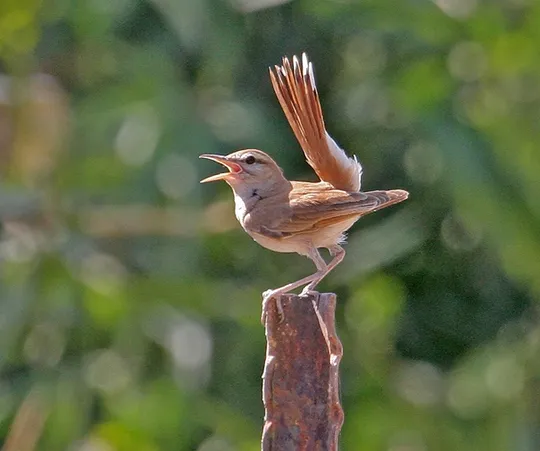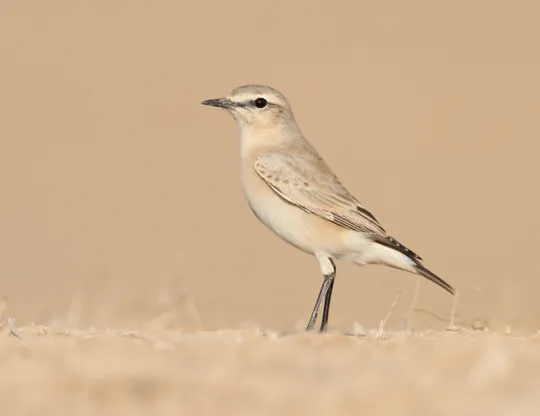Muscicapa striata
 Vulnerable
Vulnerable
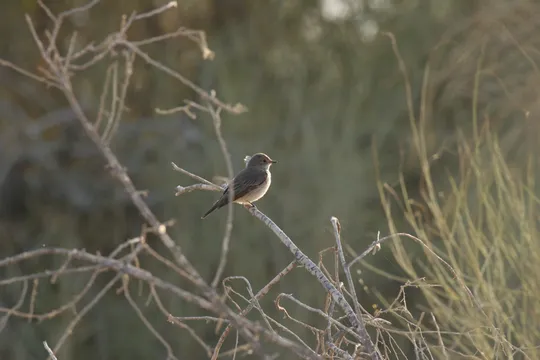

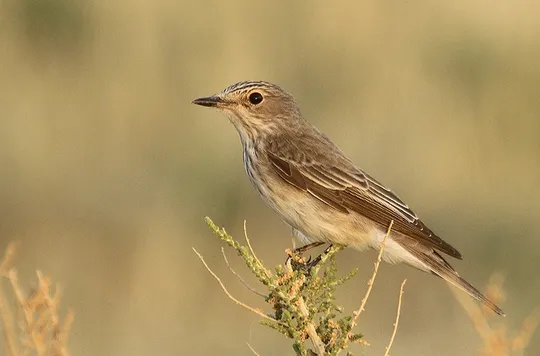
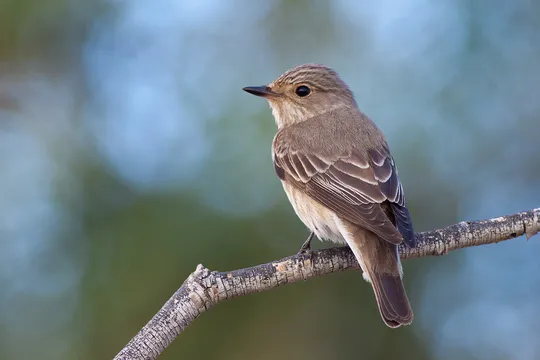
| Habitats | Parks & Woodlands, Planted Forest |
|---|---|
| Presence In Israel | Summer |
| Breeding In Israel | Breeder |
| Migration Types | Long Range |
| Zoographical Zones | Mediterranean |
| Landscape Types | Mountainous, Plains & Valleys, Rural Area |
| Vegetation Types | Plantation, Forest, Mediterranean Maquis, Parks |
| Vegetation Densities | Medium |
| Nest Locations | Tree |
| Diet Types | Invertebrate |
| Foraging Grounds | Aerial |
| Body Sizes | Small (up to 500g) |
| Threat Factors | Pesticide Poisoning, Habitat destruction in migration and wintering areas |
The Spotted Flycatcher is a relatively large flycatcher, with long wings and a long tail. Its plumage is streaked grey, and its upperparts are darker and lower parts paler. It hunts flying insects from prominent perches, snatching its prey in short flights and returning to its perch to eat it, flicking its wings and bobbing its tail.
A common passage migrant throughout Israel in spring and autumn migration and a relatively common summer breeder in Israel’s Mediterranean region, particularly in the Upper Galilee and Golan Heights. Once a common breeder in centeral Israel as well, south to the Be’er Sheva-Ofakim line in the south, but today is rare south of Haifa and the Jezreel Valley.
No specific conservation measures have been taken for this species to date.
The Spotted Flycatcher is an insectivorous bird and long-distance migrant in which the entire population overwinters in Africa south of the Sahel. Like other insect-eating birds, it has been adversely affected presumably by excessive use of pesticides in agriculture as well as by drying up and over-exploitation of habitats in its African wintering grounds.
- פז, ע. 1986. עופות. מתוך אלון, ע. (עורך), החי והצומח של ארץ ישראל. כרך 6. הוצאת משרד הביטחון, ישראל.
- Shirihai, H., 1996. The Birds of Israel. Academic Press, London.
- Symes, A. 2013. Species generation lengths. Unpublished, BirdLife International.
- Species page at Birdlife International
Current Occupancy Map
| Data Missing | Sporadic | Limited Sites | Low Density | High Density |
|---|---|---|---|---|
| 0 | 0 | 0 | 0 | 0 |
Distribution maps
The maps presented here provide visual information on the distribution of species in Israel from the past and present, and the changes in occupancy and breeding density during the comparison period. For further reading
Relative Abundance 2010-2020
Breeding density values in the current decade as determined from experts' opinion and observations from databases.
| Data Missing | Sporadic | Limited Sites | Low Density | High Density |
|---|---|---|---|---|
| 8 | 12 | 12 | 21 | 19 |
Relative Abundance 1980-1990
Density values based primarily on the book The Birds of Israel (Shirihai 1996).
| Data Missing | Sporadic | Limited Sites | Low Density | High Density |
|---|---|---|---|---|
| 5 | 14 | 14 | 17 | 22 |
Occupancy 1990-2020
The map shows differences in the species breeding distribution between the 1980's breeding map and the current weighted breeding evaluation. Negative value - species previously bred in the grid and is not presently breeding; positive value - species has not previously bred in the grid and is currently breeding.
| Data Missing | No Change | Occupancy Increase | Occupancy Decrease |
|---|---|---|---|
| 6 | 35 | 1 | 9 |
Change in Relative Abundance 1990-2020
The map shows the changes in the relative abundance of a species in each of the distribution grids between the breeding map of the 1980s and the weighted current breeding evaluation. Negative values - decline in abundance; positive values - increase in abundance; zero - no change in abundance.
| 80 to 100 | 50 | 20 to 30 | No Change | 30- to 20- | 50- | 100- to 80- | Data Missing |
|---|---|---|---|---|---|---|---|
| 0 | 4 | 2 | 22 | 12 | 14 | 11 | 16 |
| Rarity | |
|---|---|
| Vulnerability | |
| Attractiveness | |
| Endemism | |
| Red number | |
| Peripherality | |
| IUCN category | |
| Threat Definition according to the red book |
 Contributed:
Contributed: 